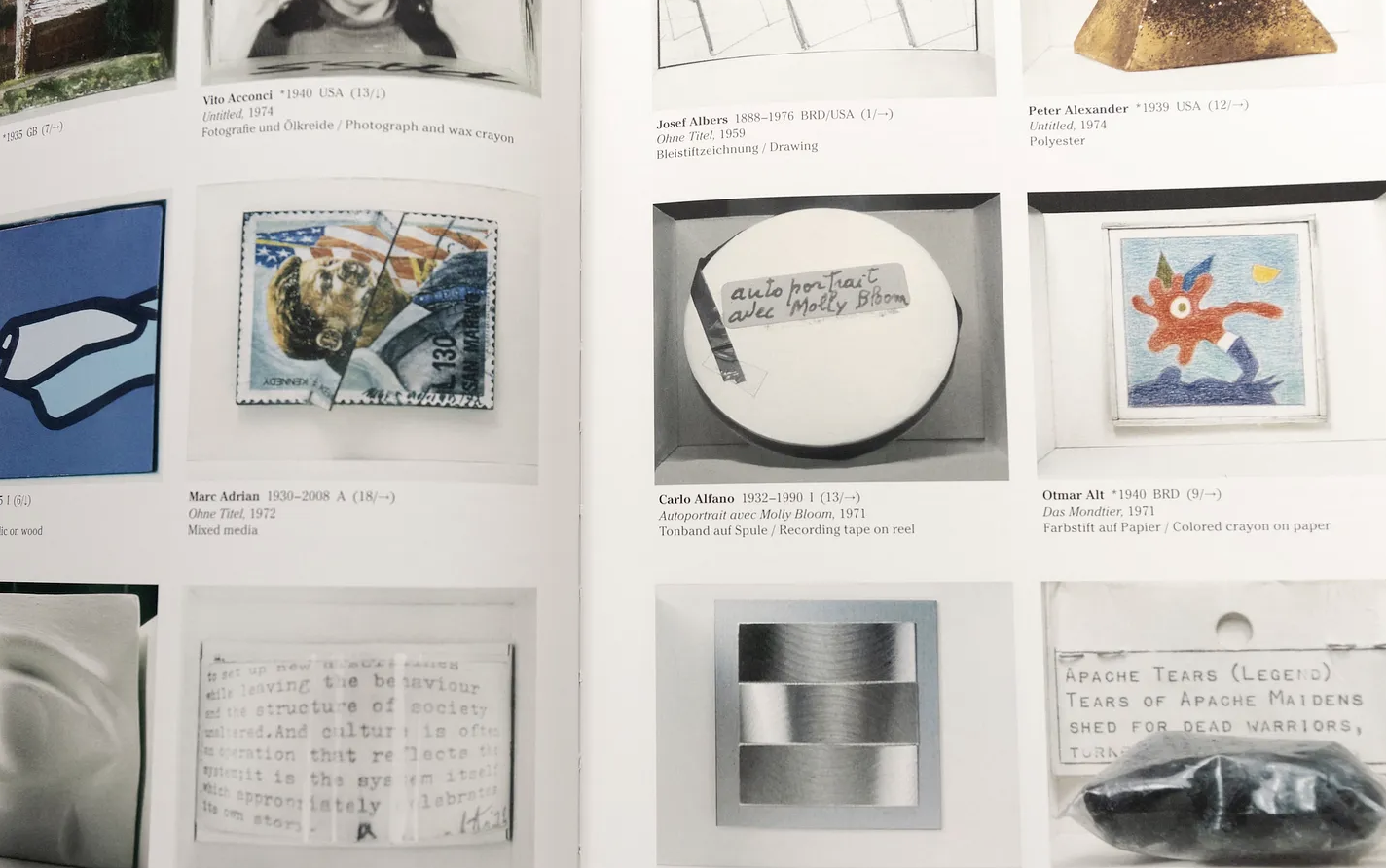SUBSTACK: The Museum of Drawers: famous artists collaborating in miniature
Creativity blooms best when it's shared with your friends.
04.02.25 for Absolument !, my Substack channel
The Museum of Drawers is a unique, curatorial art experiment begun in 1970 by Herbert Distel. In its form, it’s a twenty-story haberdashery storage cabinet that Distel transformed into a miniature museum containing 500 original works of art by 508 artists. The Schubladenmuseum created the publication about the project and now has a dizzyingly-perfect, immersive digital catalog for us to explore.
Herbert Distel explained its origins:
“While preparing for an exhibition at a gallery in Brussels in 1969, I came acoss an old box that a haberdashery store was throwing out. Although originally made to hold reels of sewing silk, it was not full of nails, screws, hooks, and other bits and pieces. The gallerist couldn’t bear to part with such a practical piece of furniture, despite my best efforts to persuade him otherwise. And I myself was so fascinated by this twenty-story skyscraper in miniature that as soon as I got back to Switzerland, I immediately called Gütermann’s Nähseide in Zurich to ask whether they had such a box to spare. Two or three months later, this wonderful object was in my studio.
It was almost certainly Marcel Duchamp’s Boîte-en-valise, a work I had first caught a glimpse of in London in 1966, which set in motion the spiral of thoughts and ideas that eventually led to the Museum of Drawers. In the second half of 1970, therefore, I began drafting and dispatching letters to a few select artists. My vision of using the box to generate a mosaic-like, multidimensional snapshot of the age—the vibrant and inspiring sixties!—was a very vivid one. It was to be a kind of compression of time.”
The idea was to give a miniature gallery room to each artist—filling 500 spaces measuring 1 11/16 x 2 1/2 x 1 7/8 inches each. To give Distel some credibility when trying to entice artists to participate (and for galleries to willingly share the mailing addresses of the aritsts), the finished project was scheduled to be on display at documenta 5 in 1972…
